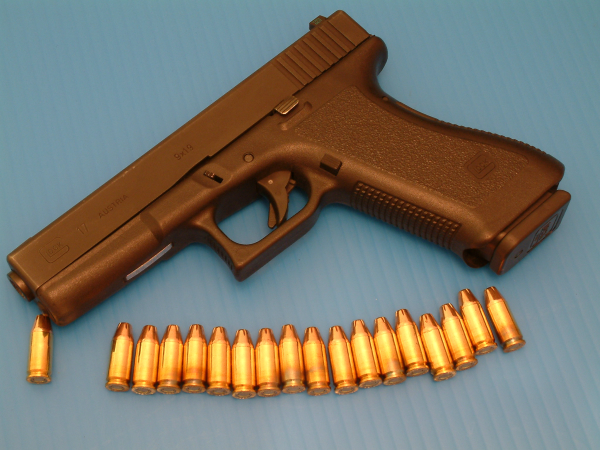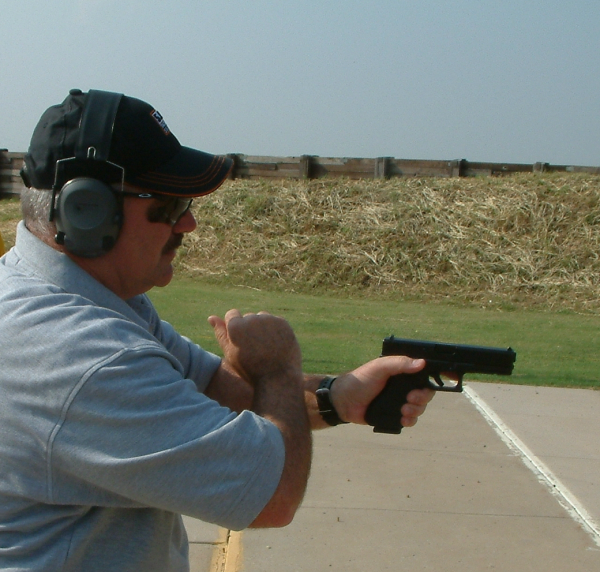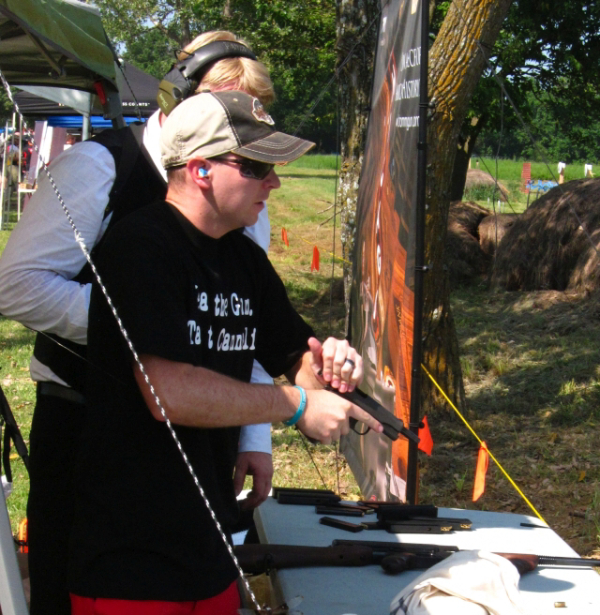
I was taken in by yet another social media video about the carry of a defense sidearm without a round in the chamber. I thought we’d dispensed with that nonsense long ago, but we’re back.
Before going into the video content, a friend recently lucked into a decent Colt 1903 Pocket Model in 380. (Yes, it’s not a 1908 – they added 380 to the 1903 line in 1908, or so I’m told). I was there when he bought it and (needlessly) cautioned him about trying to carry it in Condition One. He was quite aware of the issue, but I couldn’t help myself.
What worked for Humphrey Bogart and the other noiristas has been found to be too dangerous for those who don’t live in the world of “one more take.” That leaves him with carry of the heirloom – if he were to carry it – in Condition Three (loaded magazine, empty chamber).
But I’m against chamber-empty carry? Right?
Yes, in every case, but it’s not up to me. It’s also why I’m concerned about some of the currently available striker-fired guns. If the striker is pretensioned – completely – when a round is chambered, the firing pin safety plunger (striker block) ideally prevents firing from being jostled or dropped. That works more so than the preventative measures on most long guns. Others have a positive sear block that prevents the striker from being tripped. Such things are not my first choice.

The GLOCK striker isn’t completely pretensioned; the press on the trigger moves the striker back the distance to (1) fully cock the striker and (2) allow it to the release point. The S&W M&P line (unless changed from the first iterations) has a similar set-up, but with less travel required to fully cock the piece. Another maker of striker-guns, this one more recently to the manufacture of such handguns, told me that his company’s product has a striker that’s only 1/3-to-1/2 pretensioned. It takes a press of the trigger to move the striker back to the release point. These are better arrangements.
In short, carrying any of these chamber-empty is an affectation. It’s not a safety thing.
If you’re carrying it, access by children or morons is less likely. You can simply prevent the seizure by putting your hand on the holstered handgun. If you had it concealed, you wouldn’t likely have the great need to prevent a gun grab in most scenarios.
Also, carry of a modern revolver with hammer block or transfer bar technology allows a full load up, even with one under the hammer. If you go to fire the piece, the chamber originally under the hammer moves away in any event.
If someone insists on Condition Three, so what? Is the lack of a speedy presentation the issue? Frankly, no.
The presenter on the video demonstrated, quite ably, that he was able to make quick solid hits from Condition Three carrying the gun concealed. If that’s not the problem, then why is there any problem with those choosing to carry with an empty chamber?

A few issues are concerning. One is the actual loading of the piece amidst a combative engagement. Generally, the more one handles the gun during an emergency, the more likely it is that the shooter will induce a stoppage.
Your gun has never puked on the range? I know, the modern guns seldom seem to have an issue on the range – unless someone has “customized” it. In a fight – as shown in this era of widespread video – it seems that stoppages occur with more frequency. While there are likely a range of reasons for that, they’re not particularly relevant here – except with that “shooter-induced” category.
Without the proper firing grip on the piece, bobbled in the emergency, or the half-grasp of the slide – causing a “short-stroke” – you now have a recipe for disaster.
Let’s say it worked fine, the gun loaded and, perhaps, the reason for the presentation scuttles away from the scene unshot – what now?
Well, “to be safe,” you just have to half-load the gun again. You do that while unloading the chamber and you’re doing it while, perhaps, police are arriving at the scene or you’re trying to fumble with the piece just as another armed citizen arrives.
Or maybe the offender returns or a confederate takes action to take your gun.
The more you handle a gun, the more likely it is to induce a stoppage or an unintended discharge, particularly when you’re coming down from the stress of an armed encounter. If it’s post-shooting, it’s not only as difficult to reduce to Condition Three as before: it’s orders of magnitude more difficult.
I’m just hoping you can safely reholster the (loaded) gun so it’s not in your hands when the law arrives – or another armed citizen appears. By keeping your hand on the loaded, holstered handgun, your speed to a quick, deliberate hit is very fast -- if needed. The longest delay in presentation is finding the firing grip in the holster. Once that’s accomplished, it’s easy to get the quick hit.
If you receive a verbal command from law enforcement, moving slowly and deliberately to remove your hand from the gun and raise it will always beat dropping the gun.
If it’s on the ground, it’s gone up for grabs. Or it could discharge on impact resulting in possible negative outcomes.
My objections are not “You’ll get killed on the streets.” That could happen in any event. My concerns are more safety.

The third issue is Rule 1. All guns are always loaded. Those who carry empty-chamber assume and conclude the gun is half-loaded. All too often, that results in handling it like it’s less a gun.
It’s safe, after all, right?
No. Condition Three guns are always more dangerous because people tend to treat them as Condition Three guns. And you can’t tell – absent some gizmo that alerts to a loaded chamber (don’t trust gadgets) or cracking that slide open to check.
There have been more unintended discharges accompanied with a weak “It wasn’t loaded!” exclamation than any other kind. Part of that is that pesky empty chamber.
It’s not. It never is. So why carry it that way?
All guns are always loaded. If your SOP is loaded up, topped off, then you treat the gun like it’s a snake, always ready to strike. That, it seems to me, is wise. Relying on your ‘empty chamber’ routine is a recipe for an unexpected “bang.”
And tactically, it’s nonsense. I don’t recommend it.